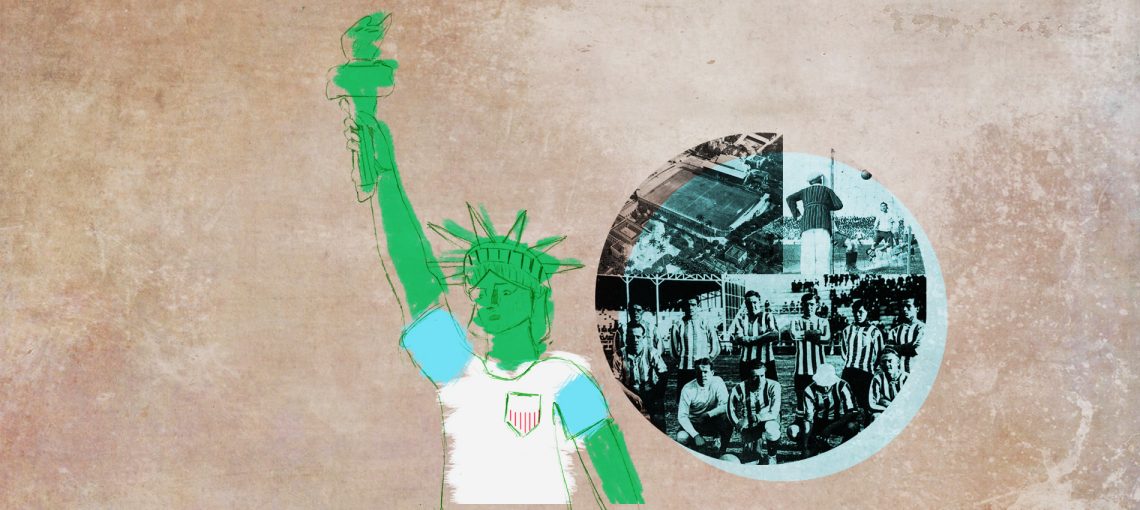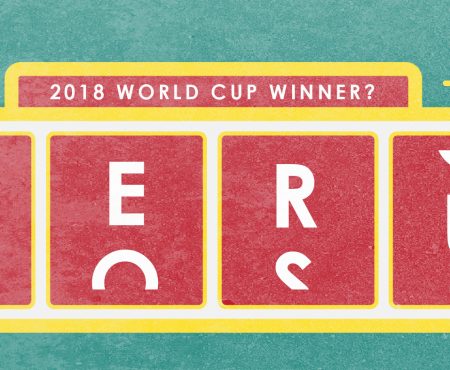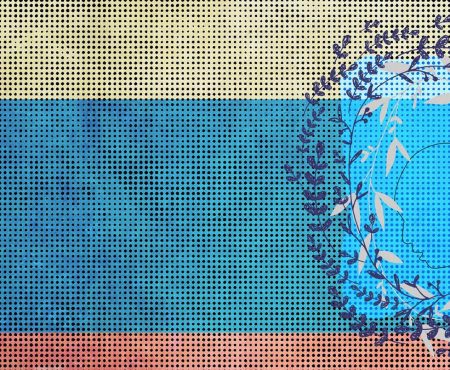When it was announced that the centennial edition of Copa América would be hosted by the United States, many asked a reasonable question: Why would the South American regional championship be hosted by a country that is not only outside the region, but in fact its traditional rival?
“Because the market is in the United States, the stadiums are in the United States, the people are in the United States. The study that we’ve done indicates that everything is in the United States,” Alfredo Hawit said. Hawit, then-interim head of the Confederation of North, Central America and Caribbean Association Football (CONCACAF,) is now awaiting sentencing for conspiracy to commit racketeering and wire fraud in the massive U.S. Department of Justice case against FIFA. So you can see why no one is quite comfortable with that answer.
Still, the United States serving as Copa América host is not as strange as it sounds. For starters, the tournament has often included teams outside the region. Since the South American confederation, CONMEBOL, consists of just 10 countries, two guest teams are customarily invited to make a more tournament-friendly number of 12. (Notable guests have included Japan, the only non-American team to participate, and Mexico, who’ve made it to the tournament final twice.) It’s true that a non-South American country has never hosted, and that the choice of the United States couldn’t be more loaded. But as we will see, poetic cash grabs are the American way.
Whence the poetry? Let’s start with the occasion for this year’s tournament, Copa América Centenario, which celebrates the centenary of both the first Copa América in 1916 and the formation of CONMEBOL that same year. Both the tournament and the organization were championed by Héctor Rivadavia Gómez, a politician and journalist who sought to unite the continent’s “fraternal countries”: Argentina, Brazil, Chile, and his own Uruguay. Though the first tournament, hosted by Argentina, was plagued with infighting and hooliganism, it was a success in the sense that it established both Copa América and CONMEBOL as key to the organization of the sport in South America. Moreover, Rivadavia Gómez’s efforts branded the tournament with American pride, as well as quite the independent streak. Euan McTear has noted that it was a controversial idea for South American soccer to want to look out for its own interests in the first place: FIFA was “firmly against the idea of continental federations,” which it saw as threats to global unity (or European dominance).
Copa América was first envisioned as an entirely symbolic victory, with a physical monetary reward only coming in after repeated success
The tournament’s organizers certainly thought of it as a revolution against Europe, or at least were good at branding it as one. It had a predecessor of sorts in the 1910 Copa Centenario Revolución de Mayo, a small regional round-robin during Argentina’s celebrations in honor of the centennial of the country’s initial uprising against the Spanish. The first Copa América in 1916 also formed part of an Argentine centennial celebration, this time in honor of the country’s actual declaration of independence. From the beginning, then, Copa América was about celebrating the region – and in many ways, defining it. That 1916 tournament also made “one of the whitest countries in South America desegregation pioneers,” as Raúl Vilchis recounts:
“It all started in 1916, when Uruguay destroyed Chile 4-0 in the first South American Championship, a predecessor to the Copa América. The following day, the Chilean squad demanded that the match be invalidated “because Uruguay had lined up two African players.” They were referring to Uruguayan players Isabelino Gradín and Juan Delgado, the first two slave descendants to have played an official match in South America (and who happened to have scored 2 of the 4 goals during the match). Uruguay’s incorporation of black players onto their national squad was a defiant break with racial taboos; they were the only soccer team in the world to have black players on their national team playing in an international tournament.”
The incident was momentous for Uruguay, which has a long history of racial oppression. But it was also momentous in that, as on so many occasions during the century to come, political and social questions were being battled out as if they were sporting ones.
Which brings us to Mike Francesa’s epic eight-minute rant about how nobody cares about Copa América or this little Lionel Messi guy somebody put on the cover of Sports Illustrated, a magazine that now serves as a “sad reminder of a different world.” (He sounds familiar for some reason.) It’s a ritual in the United States – but not just in the United States – with which we are by now quite familiar: cranky declamations of soccer’s invasion face off against globalist celebrations of its arrival, identity politics exploding in every direction. This year, though, the soccer-as-foreign-menace nonsense packs a particular punch.
Just as that first Copa América brought out racial tensions in Uruguay and Chile, Copa América Centenario has arrived on the scene in a maelstrom of domestic politics tinged with tribal fury. As Donald Trump’s anti-immigrant, and prominently anti-Latino, rhetoric permeates the ugliest of U.S. politics, the tournament has been happy to oblige as a sporting metaphor for the fear of “invasion” on which he rose to power. Or at least, the media has. Argentina-based TV station TYC Sports released an ad for Copa América that layers Trump’s speeches over images of Argentine players and fans, finishing with a warning in Spanish: “The truth is that the best they can do is not let us in.” (Mexico’s Azteca station made a similar Trump ad for the U.S.-Mexico match last year.)
The political atmosphere in South America lends itself to similar symbolic weight. This past year has seen the decline of the “pink tide,” the leftist political movement that dominated the past decade of South American politics and, to a certain extent, maintained its popularity by using the United States as a common enemy. Some of the main landmarks of this decline included the death of Hugo Chávez in 2013, which left Venezuela spiraling into this year’s economic and social catastrophe; the impeachment of Dilma Rousseff in Brazil; and the election of right-wing Mauricio Macri over the handpicked successor of Cristina Fernández de Kirchner in Argentina.
Though the shift had more to do with economic stress and corruption charges than a sudden warmth for the United States, it has certainly produced something of a northward turn in the region. Barack Obama’s state visits to Cuba and Argentina sealed what his administration hopes is the beginning of a new era in U.S.-Latin American relations. It is easy to see how Copa América could function as a sporting equivalent: hosting the South American championship in the country the continent has seen as an oppressor is the perfect accomplishment of the pan-American spirit long associated with the tournament. It’s a gesture in the way of laying down past grievances. Or is it a capitulation to northern influence, spitting on the legacy of everything Copa América stood for 100 years ago?
“More cynically, we might call this thing a made-up event that has the distinct smell of an opportunistic cash grab,” Steve Davis points out at FourFourTwo.
He’s not wrong. Keep in mind: Copa América Centenario is entirely ceremonial rather than properly competitive. The winner will not be invited to the 2017 FIFA Confederations Cup, since Chile already qualified by winning last year’s Copa América. Without actual competition, the tournament is pure symbolism – that is, pure merchandising. And in many ways, that’s the real regional tradition. Consider that Venezuela’s leftism was popular while they had cheap oil to give away, but they find themselves on the outside of regional politics now that there’s not much of an economic advantage to anti-Americanism. Similarly, Cuba and the U.S. are happy to do away with ideological anger now that the stakes are low and there’s money to be made. Symbolic pan-American realignments make for nice poetry, but even more effective cash grabs.
And this particular cash grab is, frankly, understandable. According to Kathy Carter of Soccer United Marketing, Copa América Centenario will be twice the size of last year’s tournament in Chile in terms of in-stadium attendance and global television reach. This year will see $21.5 million given out in prize money to individual teams, but it’s CONCACAF and CONMEBOL that most stand to profit from TV rights, sponsorship deals, and sales from those absurdly priced tickets – a cash influx that the U.S. Department of Justice is currently unpacking in the confederations’ corruption-charges paperwork. The oddball organization alone (defending champions Chile didn’t even get seeded) robbed the tournament of its credibility from the start.
“Then again, who cares?” Davis continued. Who among us watches soccer for the credibility, and pretends it’s something more than a business?
I can raise my hand at that. I admit to being a partisan of the poetry of it all, to wanting to buy the revolution Héctor Rivadavia Gómez was selling. I can’t help thinking, this year, about the man he got the idea from: José Susan, then director of Argentine club Estudiantes de la Plata, who first proposed Copa América in 1913. In his proposal for the tournament, Susan suggested, “The cup itself cannot be definitively obtained, but if any of the participants who contest it win three consecutive times or five nonconsecutive ones, they will be owed an incentive trophy.”
In other words, Copa América was first envisioned as an entirely symbolic victory, with a physical monetary reward only coming in after repeated success. Susan’s vision was a product of its time, a class-based view of soccer as a gentleman’s amateur pursuit rather than the way a man makes his bread. It was always a façade, and I know I shouldn’t miss it. Perhaps that’s the source of my discomfort, or at least detachment, from the Copa América Centenario: I wouldn’t lament sacrificing the poetry of Susan and Rivadavia Gómez for booming business if that business weren’t so dirty.
*Rejected title: “La pelota se mancha”








